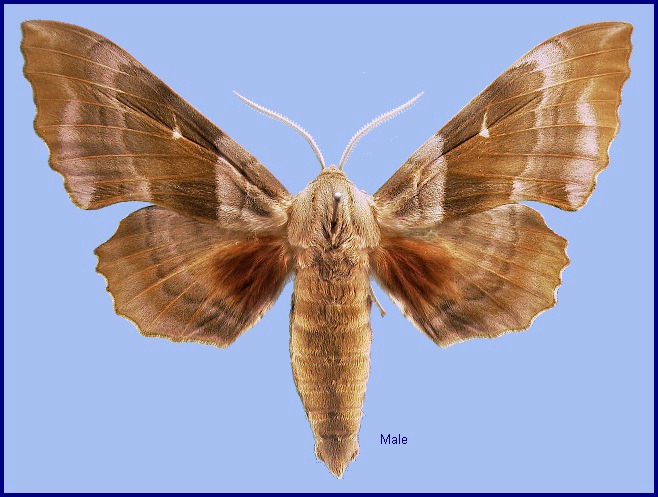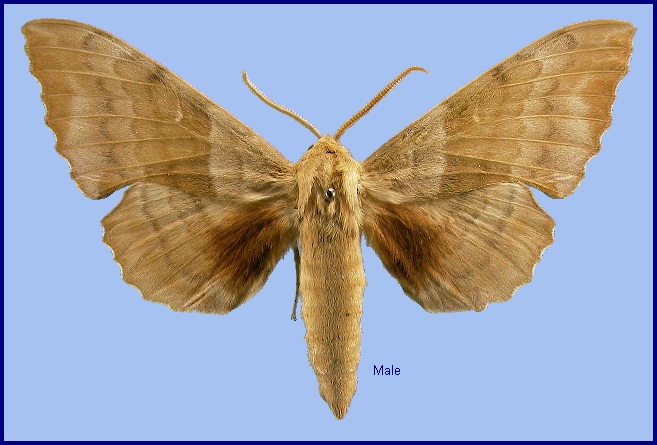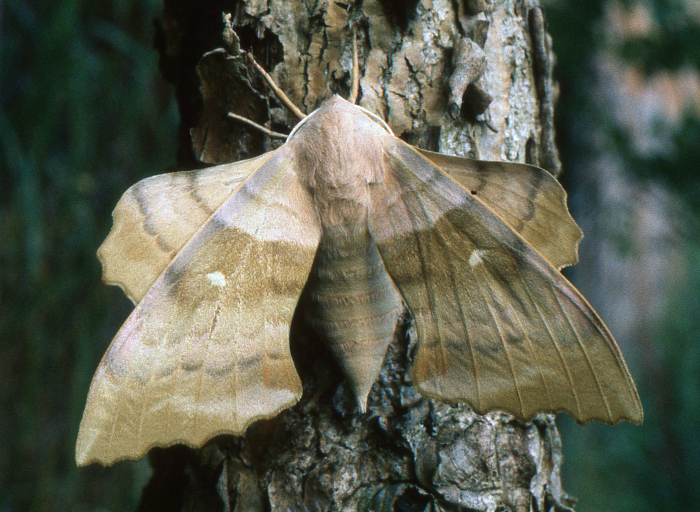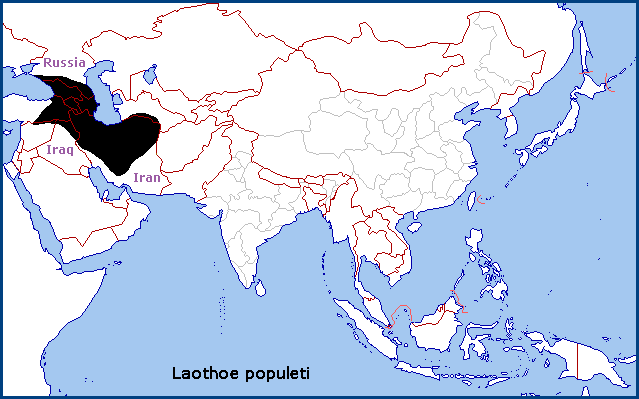UK: Persian Poplar Hawkmoth
Smerinthus populeti Bienert, 1870, Lepid. Ergeb. Reise Persien: 33.Type locality: [Iran,] Meschhet [Mashhad]; [Iran,] ??Charlog.
(Taxonomic notes. (i) 'Subsp.' syriaca (Gehlen, 1932a) is not tenable as it differs little from typical Laothoe populeti populeti; it appears in Turkey along a narrow hybrid zone between L. populeti populeti and Laothoe populi populi (Linnaeus, 1758). It is therefore synonymized with L. populeti populeti. The same applies to 'subsp.' intermedia (Gehlen, 1934a).
(ii) Eitschberger et al. (1989) unnecessarily reverted Laothoe populi populeti to specific rank without giving any reason, other than that the cornuti in the male phallus are fewer in number and less robust. As the genitalia are naturally variable in most Smerinthini, minor variations such as these tend to have little taxonomic significance. However, DNA barcoding indicates that Laothoe populeti is distinct from Laothoe populi. On the other hand, females of Laothoe populeti populeti will attract males of Laothoe populi populi in southern England, and the resulting larvae and pupae are perfectly viable over a number of generations (Pittaway, pers. obs.). This indicates that speciation is not complete and that Laothoe populeti can be viewed as either a sibling species or just a subspecies.)
Holarctic; western Palaearctic region. Pleistocene refuge: Monocentric -- Iranian.


Wingspan: 70--120mm. Very like Laothoe populi populi, but with no violet tint to the grey pigmentation, which is itself paler and faintly pinkish orange. Many have a reddish tone (f. vera Staudinger) -- easily produced by subjecting developing pupae to heat, or grey replacing the pinkish tint. The eyes are olive-green -- in Laothoe populi populi they are usually dark brown. In the genitalia of most males, the lobes of the sacculus are of equal length but more slender than those in Laothoe populi populi, especially the upper one; the phallus has fewer and thinner cornuti. The uncus is obviously broader and the gnathos longer than in Laothoe populi populi.

As in Laothoe austauti. However, many copulating pairs separate before morning, with the female laying some ova that same night.
Trivoltine; April/May, June/July and September. (When kept together under identical conditions, pupae of this species hatch noticeably later than those of Laothoe populi populi.)
OVUM: Pale green, almost sperical and large for the size of moth. As in Laothoe populi populi, but proportionately larger.
LARVA: Very similar to that of Laothoe austauti in all its stages. The caudal horn is noticeably longer, more curved and stouter than in larvae of Laothoe populi populi from western Europe, but never orange as in Laothoe austauti. The forehead may be pale blue in a few individuals.
Found from April until October.
Hostplants. Populus and Salix spp.
PUPA: Matt black or dark brown, rough (not glossy), unlike that of Smerinthus. Cremaster short, dorso-ventrally flattened, broad at base and terminating in a sharp point.
None recorded.
The Republic of Georgia (Didmanidze, Petrov & Zolotuhin, 2013), Armenia (Dubatolov, [1999]; Didmanidze, Petrov & Zolotuhin, 2013; Wąsala & Zamorski, 2015; Zolotuhin, 2018), Azerbaijan (Didmanidze, Petrov & Zolotuhin, 2013; Zolotuhin, 2018; Snegovaya & Petrov, 2021; Ioane Rostiashvili, iNaturalist 2021), Dagestan, Russia (Ustjuzhanin et al., 2022), eastern Turkey (De Freina, 2012; Akin, 2012; Kemal & Koçak, 2016; Kemal & Koçak, 2017; Kemal, Kızıldağ & Koçak, 2018; Kemal & Koçak, 2018; Koçak & Kemal, 2018; Kemal, Koçak & Uçak, 2018; Seven, 2020), north-east Iraq (Wiltshire, 1957; Kemal & Koçak, 2018c), northern Iran (Brandt, 1938; Ghassemi, Alemansoor & Alehossein, 2010; Lehmann & Zahiri, 2011; Didmanidze, Petrov & Zolotuhin, 2013; Emad Tahaei, iNaturalist 2024), and western Turkmenistan (Danov & Pereladov, 1985).
Extra-limital range. None.

One, namely Laothoe populeti caucao, which has only been reliably confirmed from Tbilisi, the capital of the Republic of Georgia.
 Return to species list
Return to species list